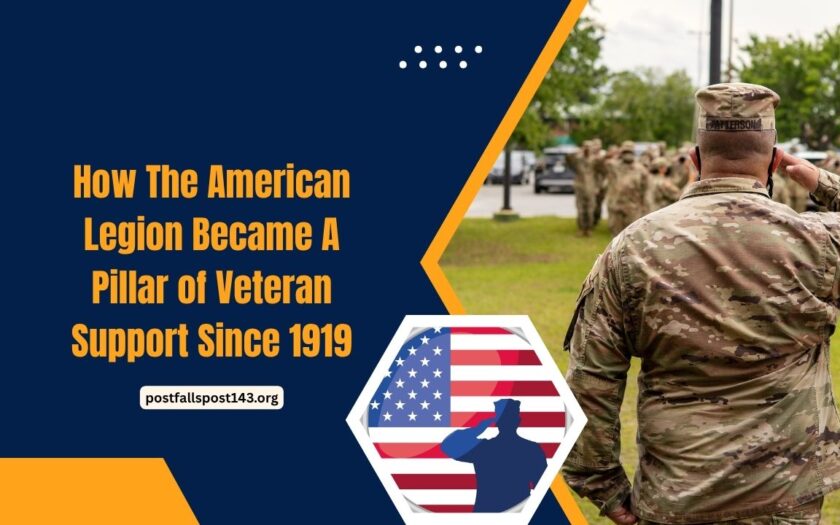Since March 15–17, 1919, the American Legion has grown from a group of World War I veterans into a mighty advocate and service provider for veterans and communities nationwide. Here’s a comprehensive, SEO‑friendly look at its history, growth, key programs, and ongoing impact.
Origins and Early Growth
| Date | Event |
|---|---|
| March 15–17, 1919 | Founded in Paris by AEF officers and enlisted personnel |
| September 16, 1919 | Chartered by U.S. Congress as a patriotic veterans’ organization |
| November 10–12, 1919 | First national convention in Minneapolis; adopted Constitution |
| 1924 | Lobbying success: passage of Adjusted Compensation (Bonus) Act |
| 1944 | Drafted and helped pass the G.I. Bill |
| 1946 | Membership surges to 3.3 million posts plus 1 million in Women’s Auxiliary |
| 2023–24 | Secured over $21 billion in VA disability benefits |
From its inception, the Legion emphasized nonpartisan nonprofit service. In its first national convention, the organization banned partisan political endorsements but launched a legislative arm to advocate for veterans.
Expansion of Membership & Milestones
- Growth to 1 million members within a few years after 1919, with 1.6+ million in over 12,000 posts globally today
- In 1946, membership soared to 3.3 million, supported by a parallel Women’s Auxiliary
- This growth allowed for creation of youth programs like Boys’ State (1935) and Boys Nation/Girls Nation, emphasizing patriotism, civic leadership, and community service
Major Contributions to Veteran Welfare
The G.I. Bill (1944)
The Legion crafted and lobbied heavily for the Veterans Readjustment Act, providing educational funding, housing loans, vocational support, and unemployment benefits for returning soldiers
Disability & Health Benefits
Through accredited service officers, the Legion helped veterans claim over $21 billion in VA benefits during FY 2023–24
Mental Health & Suicide Prevention
In 2025, it strongly advocated for funding of VA suicide-prevention outreach, peer-support systems, and standardized mental health data collection
Youth & Civic Programs
Initiated Boys’ State in 1935; now supports Boys Nation, Girls State, and scholarships through the American Legion Auxiliary .
Ongoing Advocacy & Legislative Impact
- In June 2025, the Legion testified before the House Veterans’ Affairs Committees and supported multiple VA-benefit bills .
- The organization remains a key lobbyist for veteran benefits, including mental health, housing assistance, and educational funding
- Posts continue to support community initiatives—golf outings honoring Vietnam vets and rebuilding facilities for local veterans
Modern-Day Community Engagement
Individual American Legion posts—like Post 82 in Nashville—offer culturally vibrant spaces where veterans and civilians can connect through music, events, youth sports, ceremonial duties, and mutual support. Crucially, these posts:
- Use volunteer-run events to fund local veteran services.
- Create safe, nonpartisan environments for transitioning service members.
- Offer veteran outreach programs, ensuring no one falls through the cracks.
Key Facts & Figures
| Metric | Value |
|---|---|
| Founding dates | March 15–17, 1919; chartered Sept 16, 1919 |
| Peak membership | 3.3 million (1946) + Women’s Auxiliary 1M |
| Current membership | 1.6 million in 12,000+ posts worldwide |
| VA benefits secured (2023–24) | $21 billion |
| Youth programs initiated | Boys State (1935), Girls State, Boys/Girls Nation |
| Key legislation influenced | Bonus Act 1924; G.I. Bill 1944; ongoing mental health funding |
Over more than a century, the American Legion has evolved from its March 15–17, 1919 founding into an unwavering advocate, community builder, and essential service provider for veterans and their families—continuing today with purpose and impact.
FAQs
When and why was the American Legion founded?
It was founded March 15–17, 1919, in Paris by WWI AEF veterans, and chartered September 16, 1919, to support returning service members and preserve camaraderie
What major veteran programs did the Legion create?
The Legion authored and advocated for the G.I. Bill (1944), initiated youth civic programs like Boys State, and provides ongoing VA disability and mental health support today.
How does the Legion help veterans now?
Through accredited service officers, it secures benefits (over $21 b in 2023–24), lobbies for healthcare funding, runs local posts offering community events, peer support, and ceremonial services.

